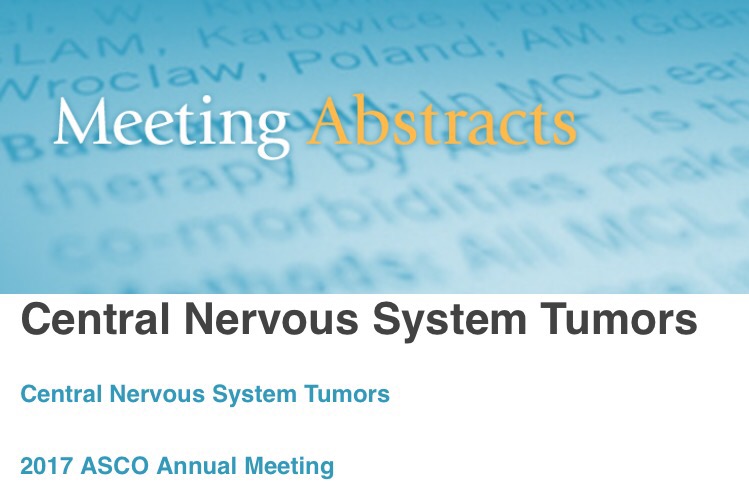Malignant hemangiopericytoma: Treatment patterns and survival.Sub-category:
Central Nervous System Tumors
Category:
Central Nervous System Tumors
Meeting:
2017 ASCO Annual Meeting
Abstract No:
e13520
Citation:
J Clin Oncol 35, 2017 (suppl; abstr e13520)
Author(s): Rolando Barjas, David Eric Piccioni; University of California San Diego Moores Cancer Center, La Jolla, CA; Center for Personalized Cancer Therapy and Division of Hematology and Oncology, UCSD Moores Cancer Center, San Diego, CA
Abstract Disclosures
Abstract:
Background: Hemangiopericytoma (HPC), or solitary fibrous tumor of the central nervous system (CNS), is a rare mesenchymal tumor that arises from the pericytes of the meningeal capillaries. These tumors account for less than 1% of all CNS tumors and are categorized into low-grade (WHO grade I and II) or high-grade (WHO grade III, anaplastic) neoplasms. The optimal treatment for grade III HPC is unclear. The aim of this study was to evaluate treatment patterns and survival for grade III HPC using the California Cancer Registry (CCR). Methods: Treatment and demographic data were extracted from the CCR for patients with grade III HPC of the CNS, from 1988-2010. Overall Survival (OS) was evaluated as a function of treatment (surgery, radiation or both), as well as extent of resection. Kaplan Meier survival analyses were performed for OS. Bivariate and multivariable analyses were done via cox proportional hazard regression models for all demographic and treatment variables. Results: A total of 94 patients with grade III HPC were identified from the registry. The most prevalent demographics were age > 50 years (59%), female (61%), non-Hispanic White (60%), and married (54%). 54% received radiation, and subtotal resection (STR) (63%) was the most common surgical outcome. However, survival was greatest in patients that received gross total resection (GTR) with radiation (median OS not reached). GTR/radiation (median OS not reached) demonstrated improved OS compared to STR/radiation (median OS 10.3 years; HR = 0.389, 95%CI 0.157-0.960) or GTR alone (median OS 6.6 years; HR = 0.254, 95%CI 0.073-0.880). Age < 50 (median OS 15.7 years), Asian/PI (median OS not reached) and married (median OS 9.9 years) were significant predictors of OS. In the multivariable cox model worse overall survival remained for older age (HR = 3.079, 95%CI 1.428-6.636) and divorced/widowed/separated (HR = 2.027, 95%CI 1.054-3.897) when compared to their younger and married counterparts. Conclusions: Patients that received GTR and radiation demonstrated the best long-term prognosis. Demographic analyses identified additional independent predictors of survival.

